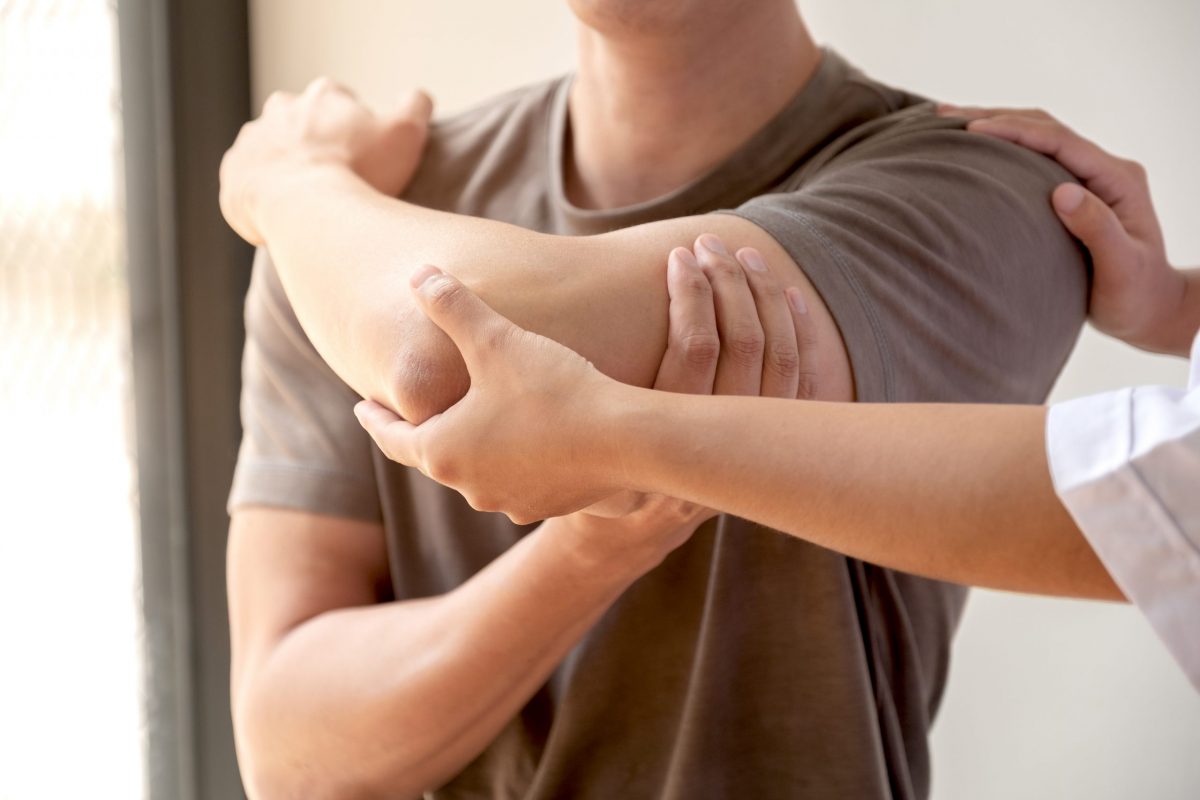
Rotator cuff injuries are some of the most common shoulder problems in the U.S. Made of a group of muscles and tendons, the rotator cuff supports your arm’s ability to function. It keeps your arm within its socket and allows it to lift and rotate. The injury can be painful and debilitating and keep you from doing things you love.
Whether you suspect you have sustained a rotator cuff injury, want to learn how to prevent one from occurring (or recurring), or want to learn rotator cuff injury exercises to help support recovery, we encourage you to seek treatment as soon as possible.
EmergeOrtho–Triangle Region is home to a world-class team of board-certified, fellowship-trained Shoulder Specialists who are experts in identifying, treating, and managing rotator cuff injuries. Our physician-owned practice uses the most advanced medical approaches and techniques in the Raleigh-Durham area to provide patients with the best available care.
Common Rotator Cuff Injuries and Their Symptoms
To better explain rotator cuff injuries and treatment, it is useful to understand the anatomy of the shoulder joint.

The shoulder joint includes three bones: the upper arm bone (humerus), shoulder blade (scapula), and collarbone (clavicle). The head of the upper arm bone sits within a socket called a glenoid. A network of muscles and tendons (rotator cuff) covers the head of the upper arm bone and secures it within the socket. The rotator cuff also attaches the upper arm bone to the shoulder blade, allowing your arm to lift and rotate.
With this anatomy in mind, rotator cuff injuries typically fall within one of three categories:
- Rotator Cuff Tendinitis
When one or more tendons that connect the muscles become irritated and swollen. If rotator cuff tendinitis is aggravated or left untreated, the affected tendon can cause pain, limited range of motion, and limited function. - Partial Rotator Cuff Tear
When one or more tendons partially tear, causing them to fray. If left untreated or aggravated, it can cause pain, limit the range of motion and eventually lead to a full-thickness tear. - Full-Thickness Rotator Cuff Tear
A shoulder tendon can fully tear and separate from the bone. Eventually, a complete tear can cause significant pain and limited function. Delaying treatment of full-thickness tears can also make a surgical repair more difficult. In time, untreated full-thickness tears can also lead to shoulder arthritis.
Rotator cuff injuries are typically caused by:
- Natural degeneration. Everyday “wear-and-tear” from aging or heavy overuse is the most common cause of rotator cuff injuries.
- Sudden, traumatic injury. Falling on your shoulder, lifting something too heavy, a sports injury, forceful impact, or another associated injury can damage the rotator cuff.
Symptoms vary depending on the type and severity of the injury but usually include:
- Pain from a sudden injury
- Arm weakness
- Pain that develops/worsens over time from a degenerative injury
- Shoulder movement with cracking/popping sensation
- Pain when lifting, rotating, or resting the arm
Rotator Cuff Injury Exercises and Treatment Options
Patients who meet with an EmergeOrtho Shoulder Specialist undergo an in-depth consultation, which may include diagnostic imaging tests. The results guide the development of a personalized treatment plan, which may include both surgical and nonsurgical treatments.
Approximately 80% of patients with rotator cuff tendonitis or tears reported improved functionality and less pain as a result of nonsurgical treatments. The conservative options for rotator cuff injury treatment include:
- Rest
- Pain relief/anti-inflammatory medication
- Activity restrictions
- Steroid injections
- Physical therapy/rotator cuff exercises to rebuild strength
For some individuals, this may be sufficient. However, if the injury is too severe or does not respond to nonsurgical treatments, surgery may be recommended. Generally, one of three surgical options is performed on the rotator cuff (depending on the size, location, and severity of the tear):
- Arthroscopy
In a minimally invasive procedure, the shoulder surgeon needs only a small incision to insert a tiny camera into the shoulder joint. They then use miniature surgical instruments to perform the surgery. The surgeon can evaluate and repair the tear as well as shave and/or remove any bone spurs that may have formed from the injury. Arthroscopy to repair rotator cuff tears causes less post-surgical pain and scar tissue formation. - Mini-Open Surgery
Mini-open surgery allows the surgeon to closely examine the rotator cuff before making extensive repairs. An arthroscopic camera is first inserted to assess and treat minimal damage, such as removing bone spurs. Once that portion of the surgery is complete, the rotator cuff is repaired through a small incision. - Open Surgery
Through a shoulder incision, the surgeon detaches the deltoid muscle to gain access to the tear. This surgery is usually reserved for tears that are too large, severe, or complex for a minimally invasive procedure.
Prevent Rotator Cuff Injury
Preventing a rotator cuff injury falls into one of two categories: preventing one from happening in the first place and preventing one from reoccurring.
To prevent a torn rotator cuff :
- Perform rotator cuff injury exercises to strengthen your shoulder muscles and tendons as directed by your surgeon and physical therapist.
- Use proper technique and conditioning to perform activities/actions requiring repetitive motions or frequently lifting your arms over your head.
- Allow minor shoulder pain/injuries to fully heal before returning to activities that put stress on them.
- Avoid shoulder overexertion.
Even if you have already been treated for a torn rotator cuff and diligently performed rotator cuff injury exercises, the injury can recur if you do not give it time to heal and take care to protect your shoulder.
To prevent recurring rotator cuff injuries:
- Follow your doctor’s rehabilitation instructions.
- Avoid activities/actions that could stress your rotator cuff before it fully heals.
- Complete a physical therapy program, including performing rotator cuff injury exercises at home as directed by your therapist to restore rotator cuff strength and flexibility.
Emerge Stronger. Healthier. Better. With EmergeOrtho—Triangle Region
At EmergeOrtho, our Shoulder Specialists are dedicated to providing sophisticated, patient-centered care using the most advanced, state-of-the-art techniques and technology. If you have shoulder pain, or recently experienced a shoulder injury, self-schedule an appointment now. Or, call us any time at (919) 220-5255.








